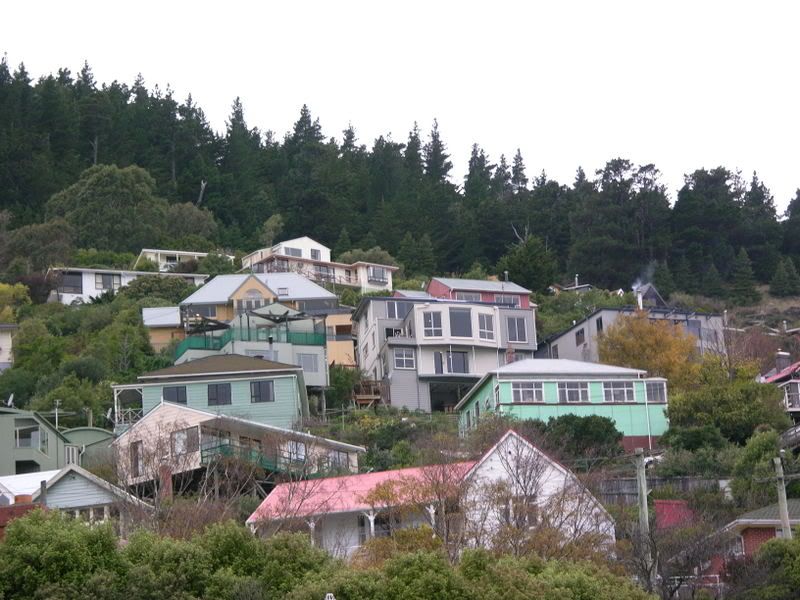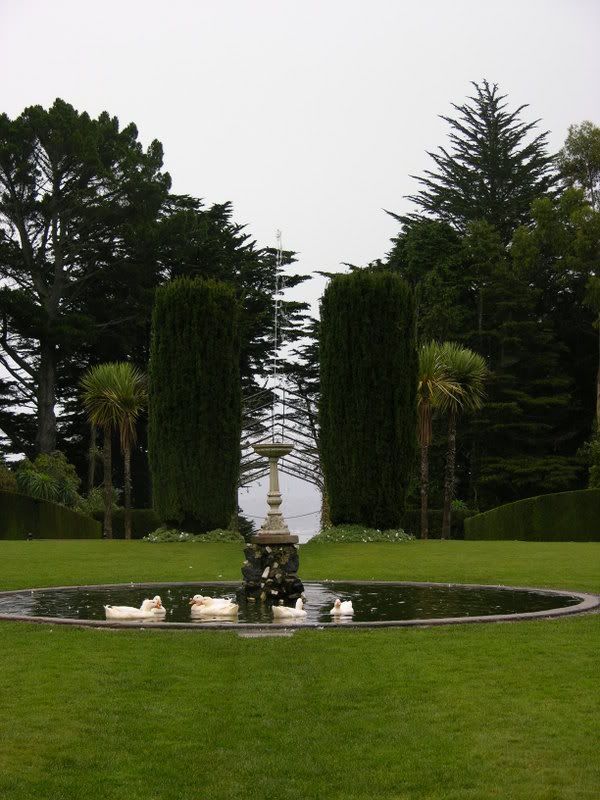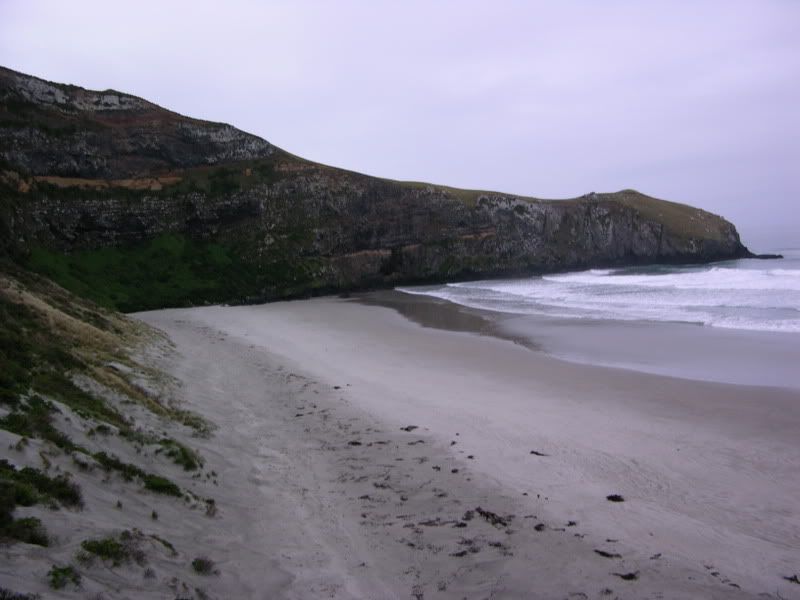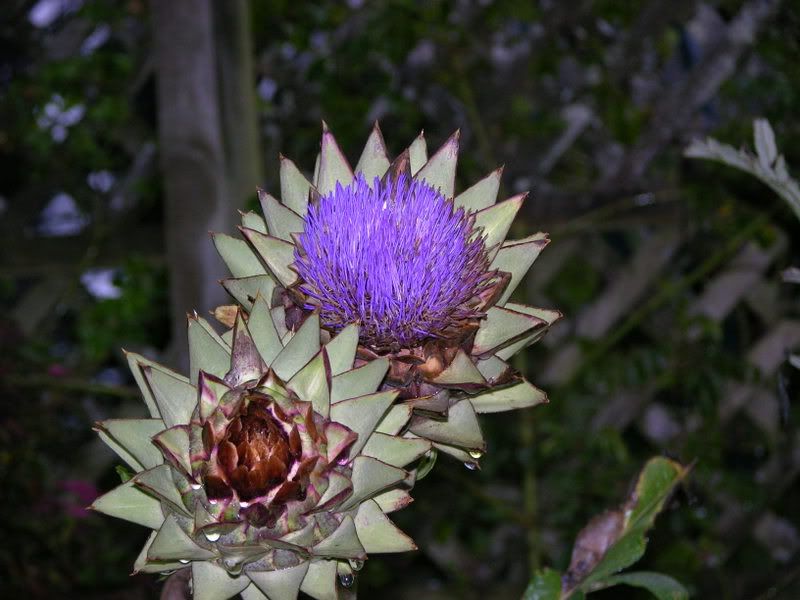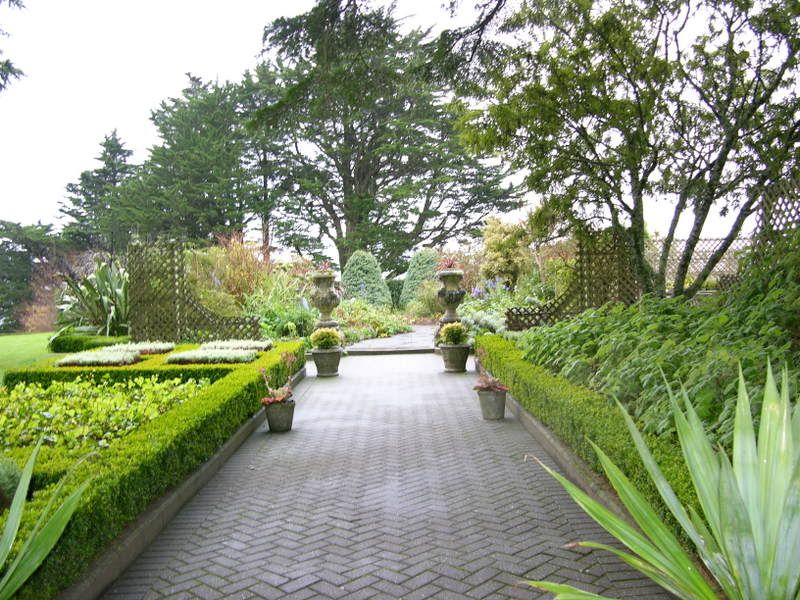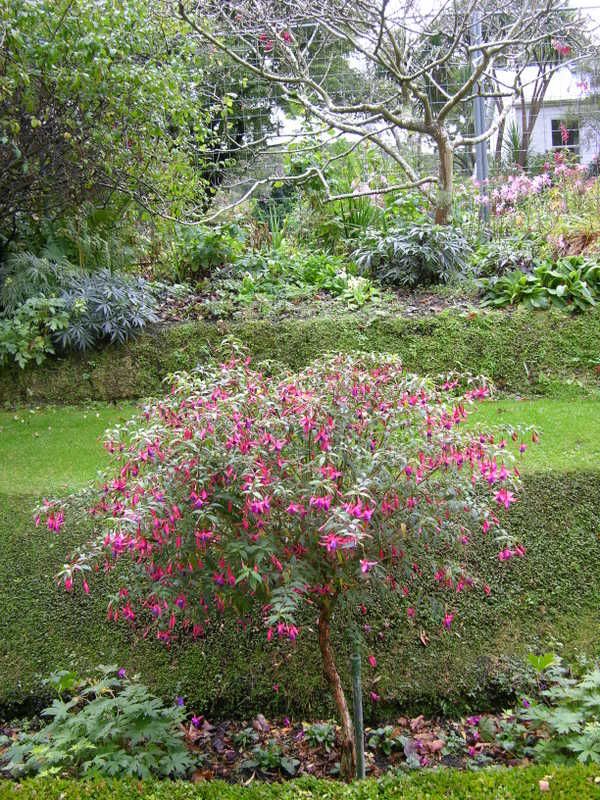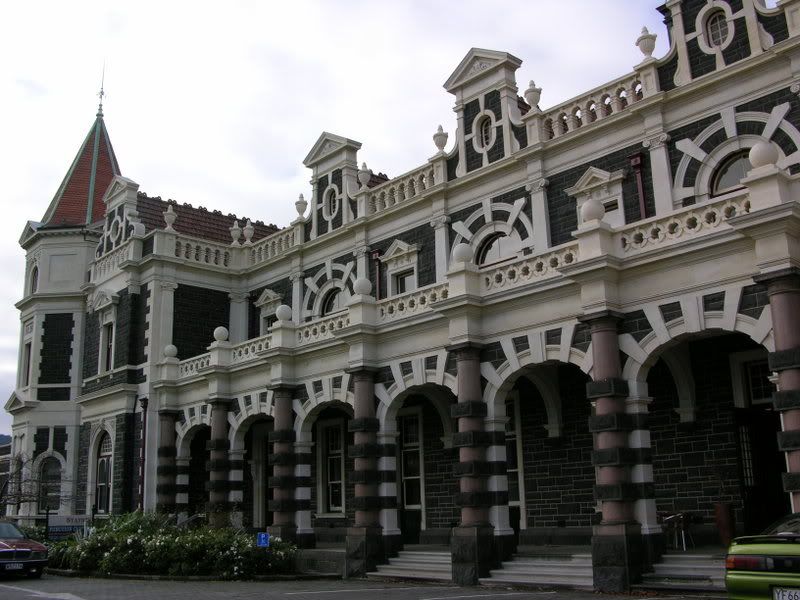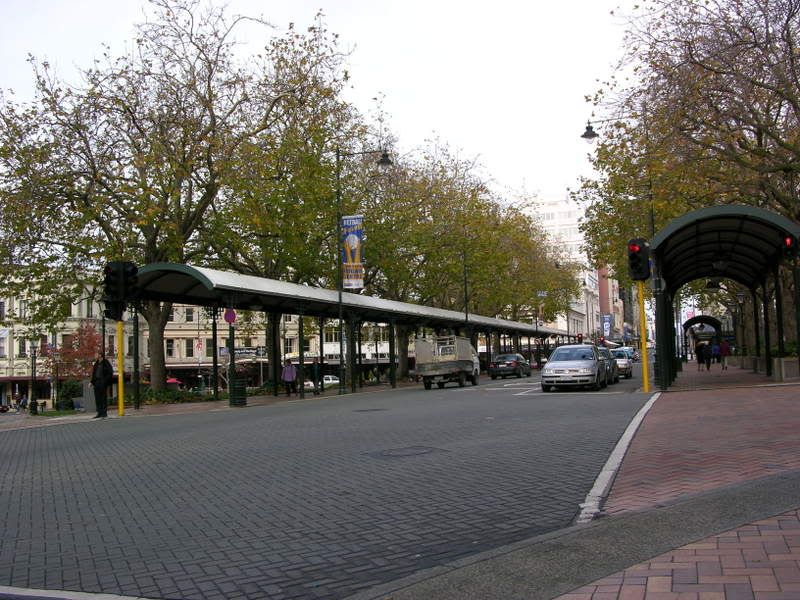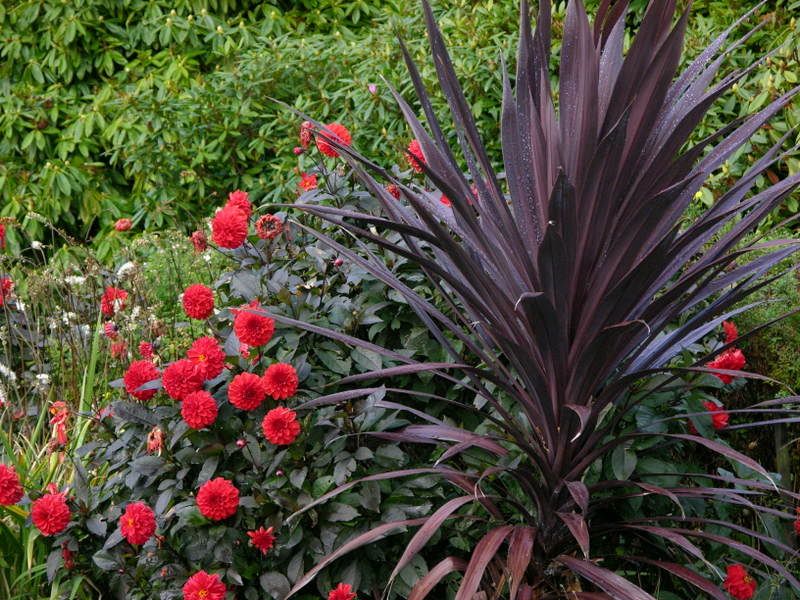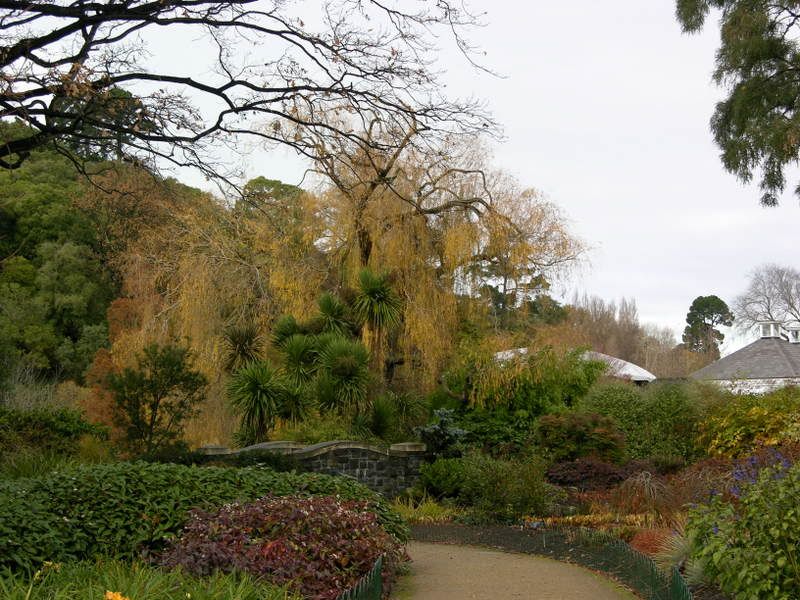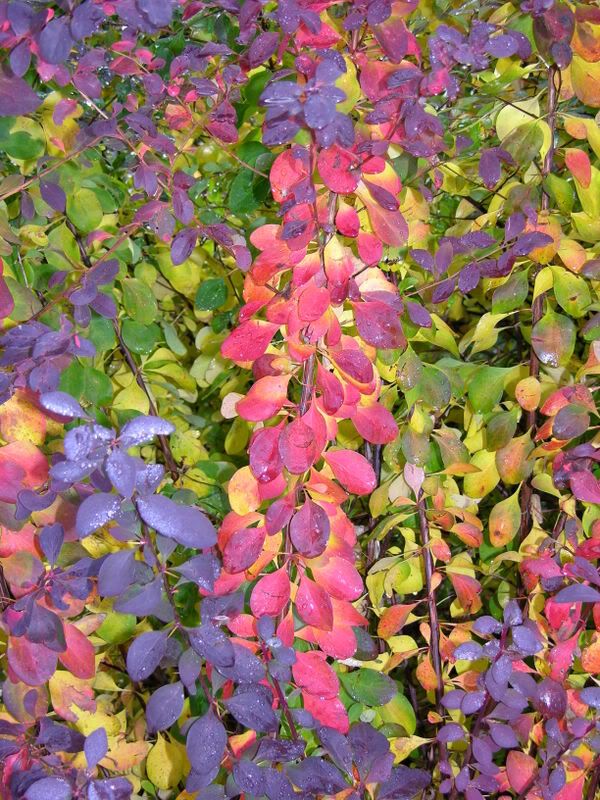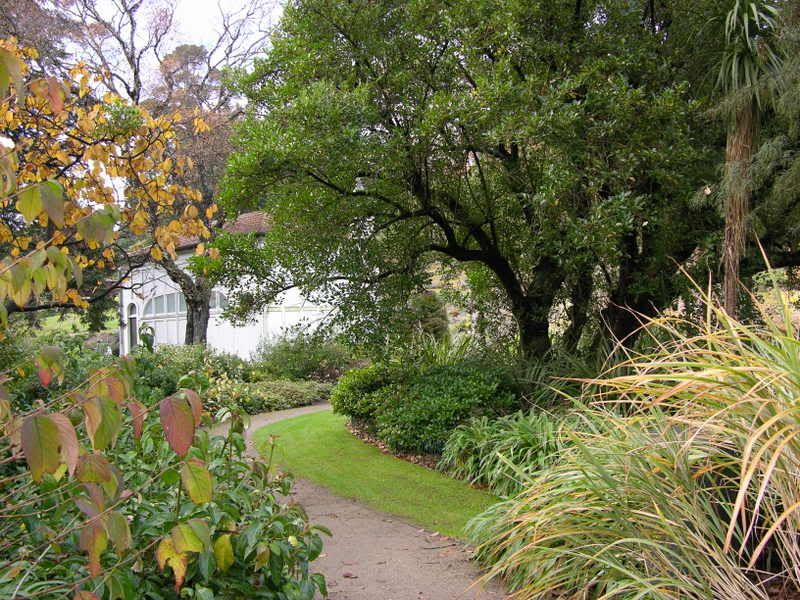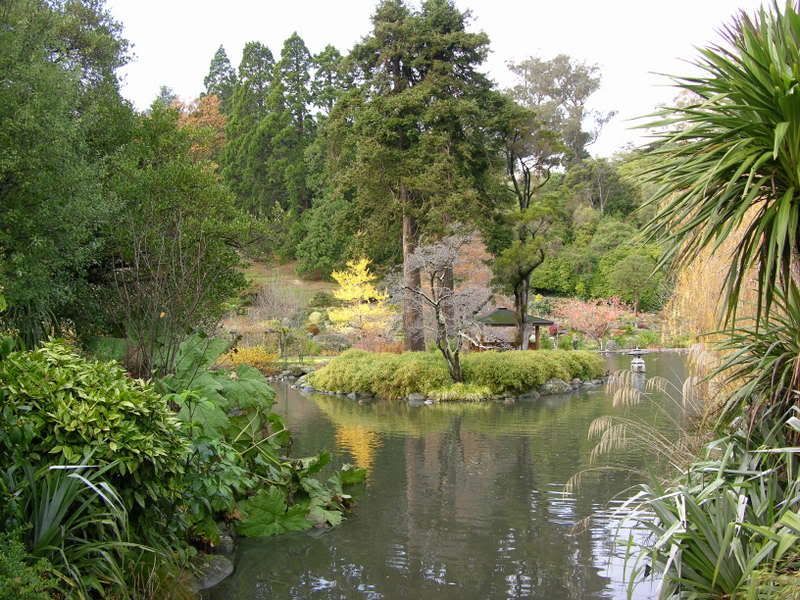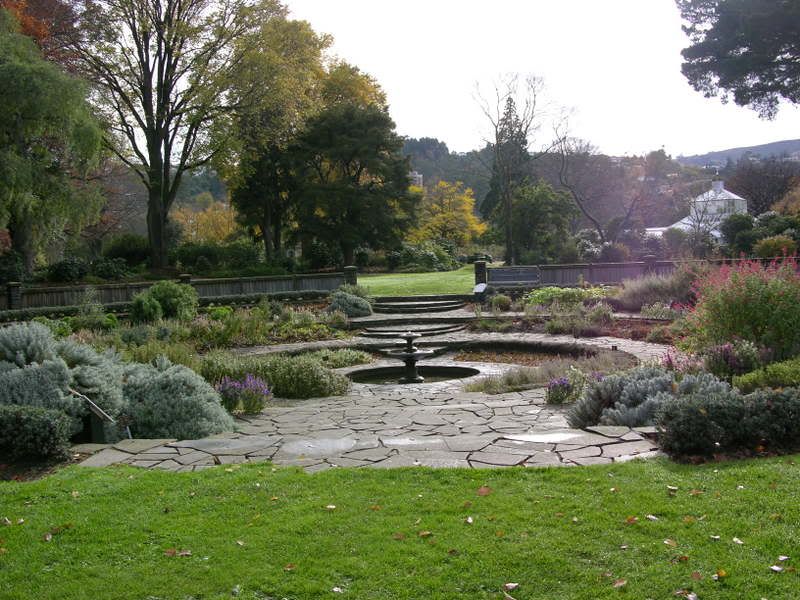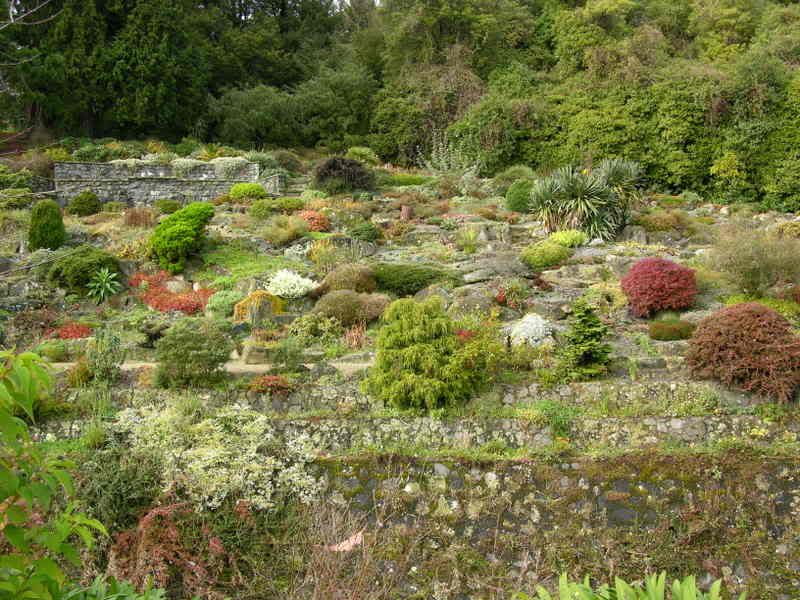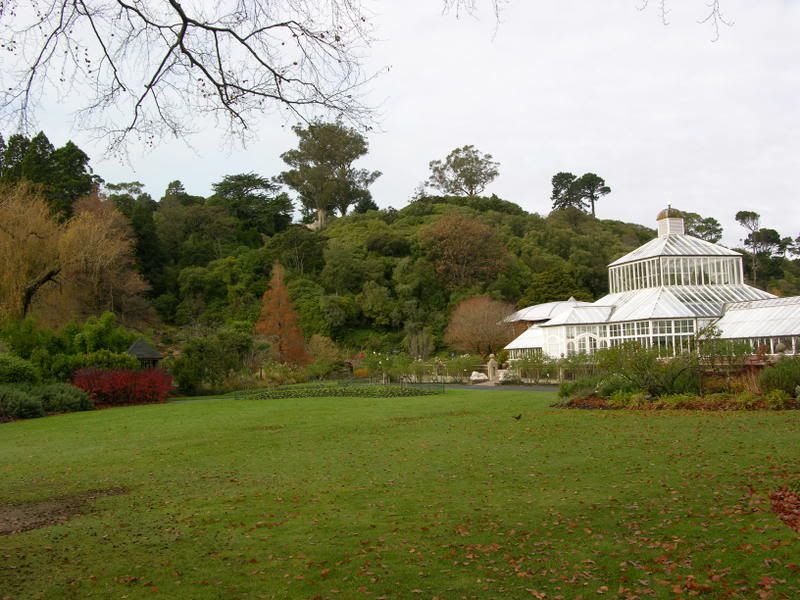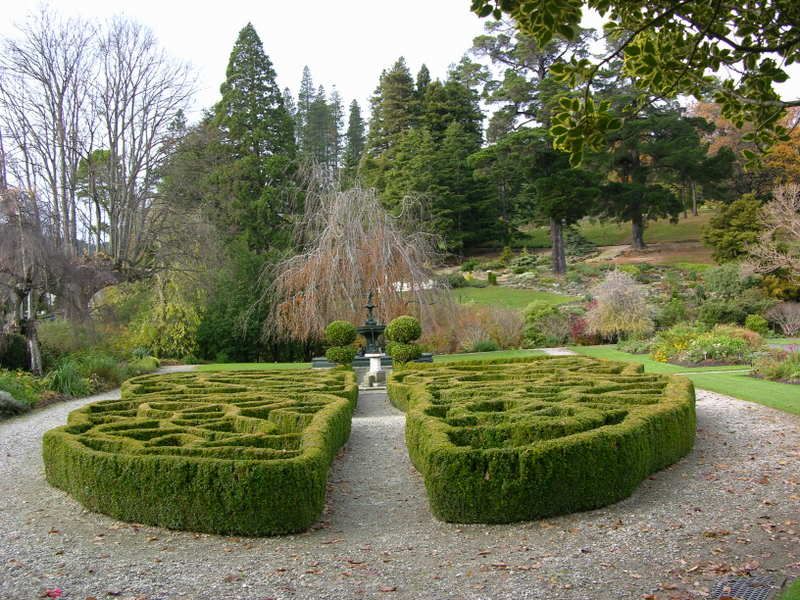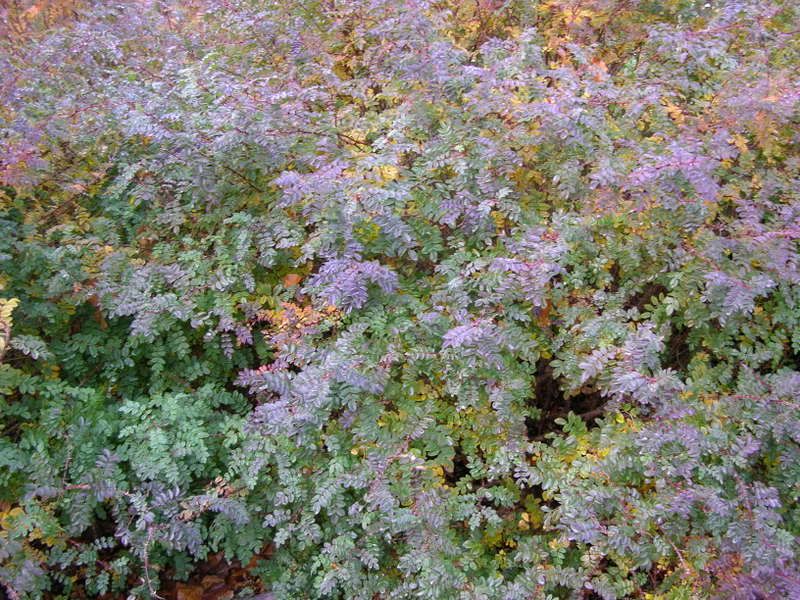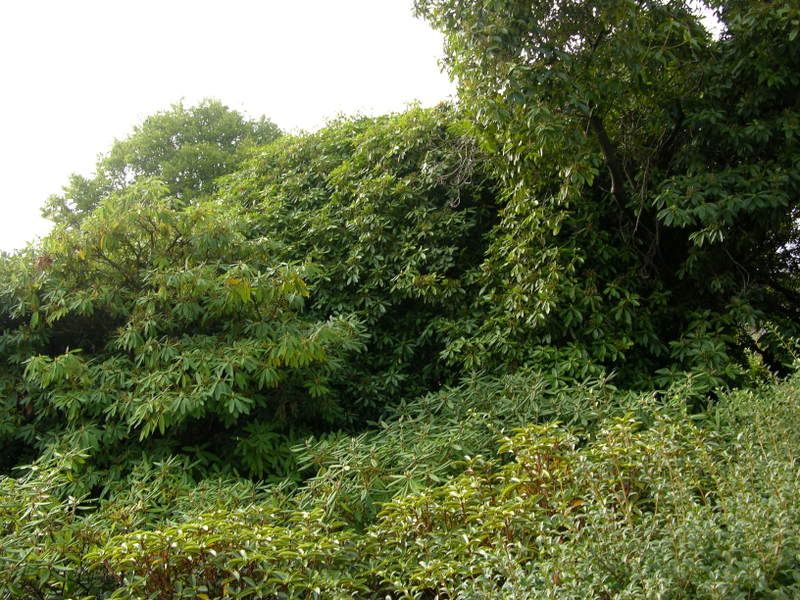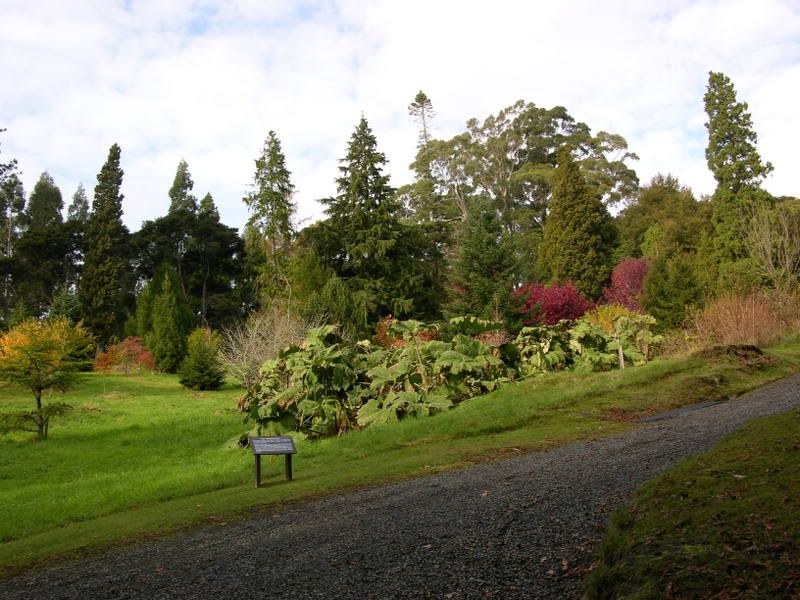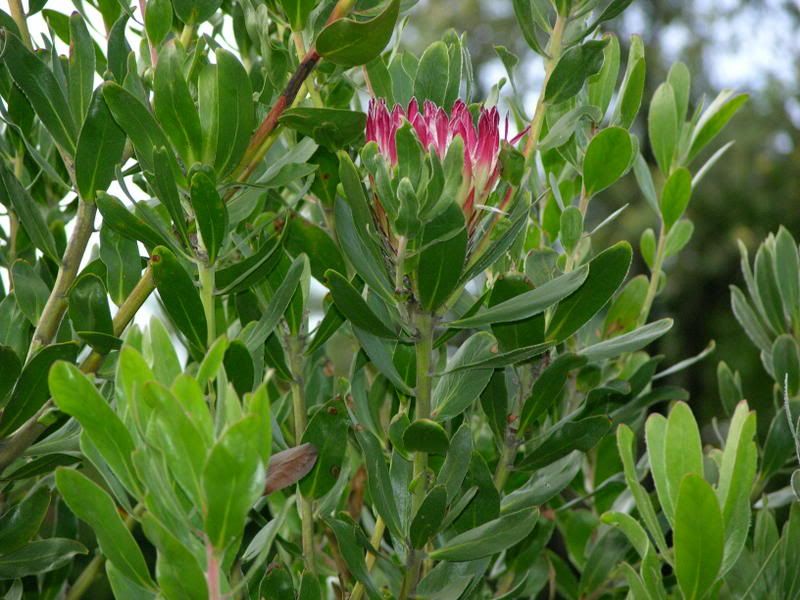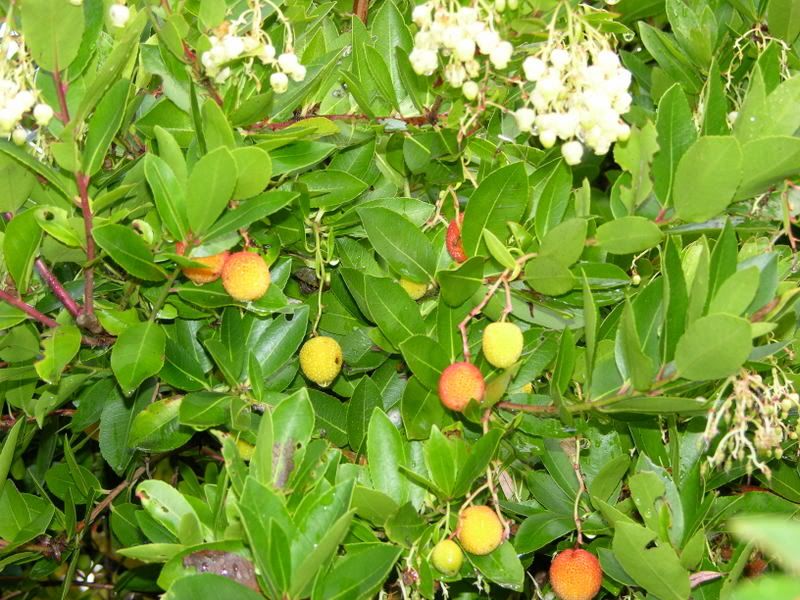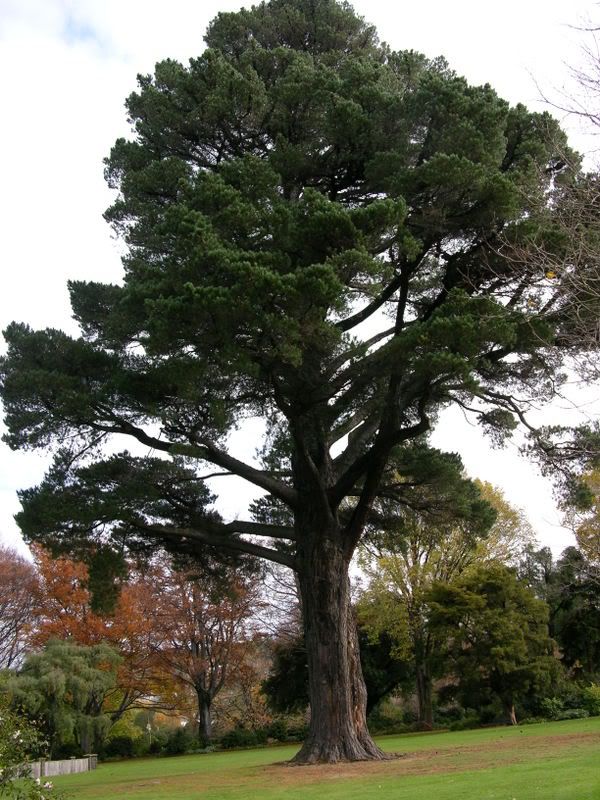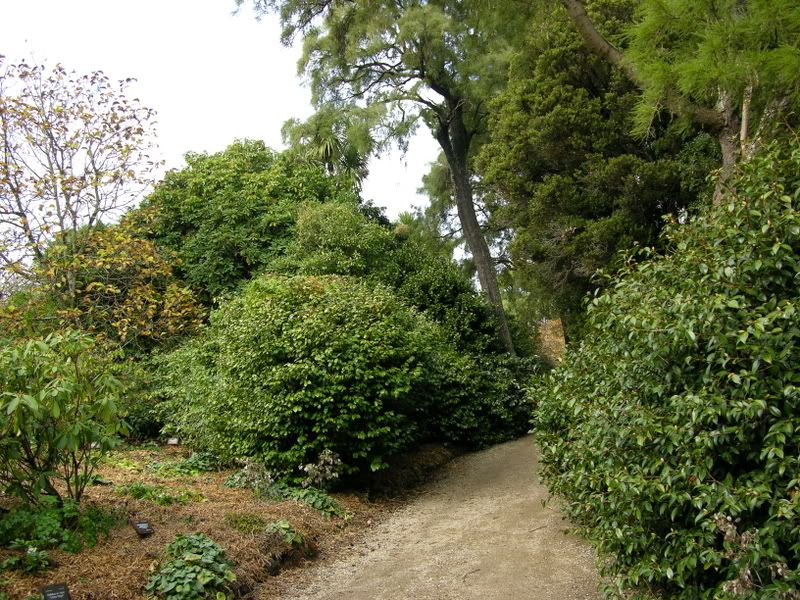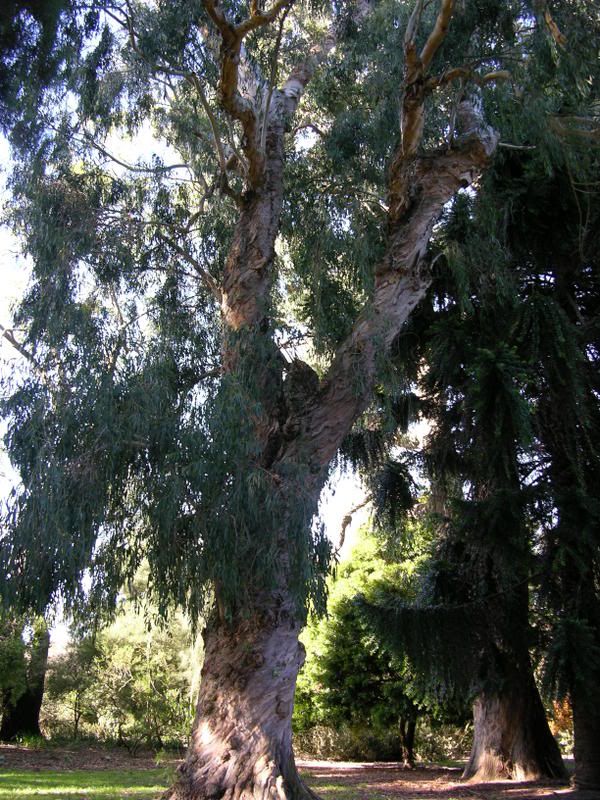
 Here she is with her arms reaching out victoriously
Here she is with her arms reaching out victoriously
 Easy to see why it is called ‘Silver Peppermint’
Easy to see why it is called ‘Silver Peppermint’
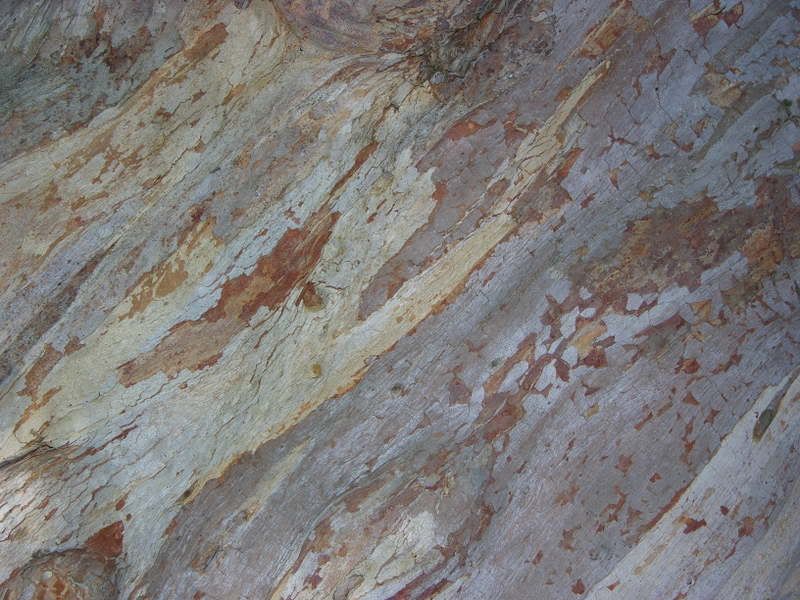 Back here at the Christchurch Botanical Garden I stumbled early on to one of my favorite trees from Chile, Araucaria imbricata the Monkey Puzzle tree. The British didn’t settle Christchurch until 1850 and shortly there after they began to establish the botanical garden. I thought no surprise there the Englishmen probably put their flower gardens in long before they finished their roofs. The garden is in downtown surrounded by rivers and has a strong English influence, as does the entire city. Many of the trees in the garden are 120 plus years old.
Back here at the Christchurch Botanical Garden I stumbled early on to one of my favorite trees from Chile, Araucaria imbricata the Monkey Puzzle tree. The British didn’t settle Christchurch until 1850 and shortly there after they began to establish the botanical garden. I thought no surprise there the Englishmen probably put their flower gardens in long before they finished their roofs. The garden is in downtown surrounded by rivers and has a strong English influence, as does the entire city. Many of the trees in the garden are 120 plus years old. 
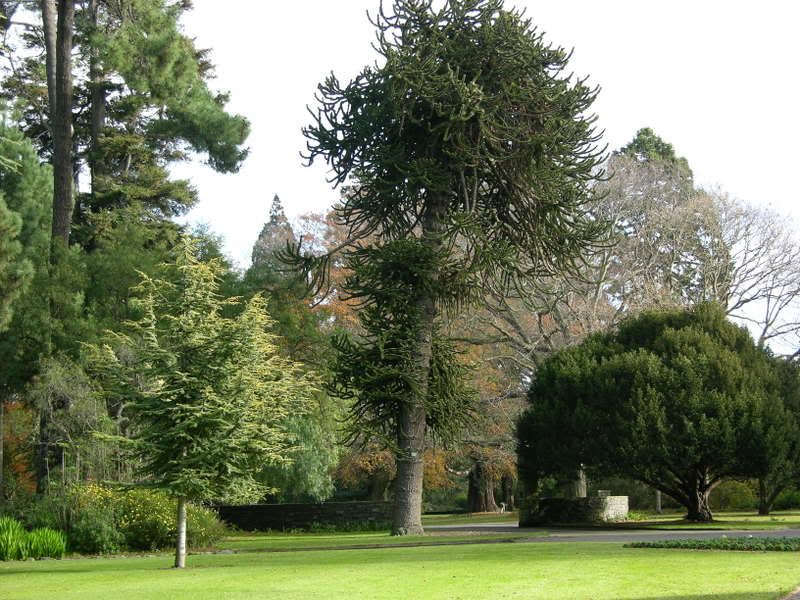
I love the shiney needled branches
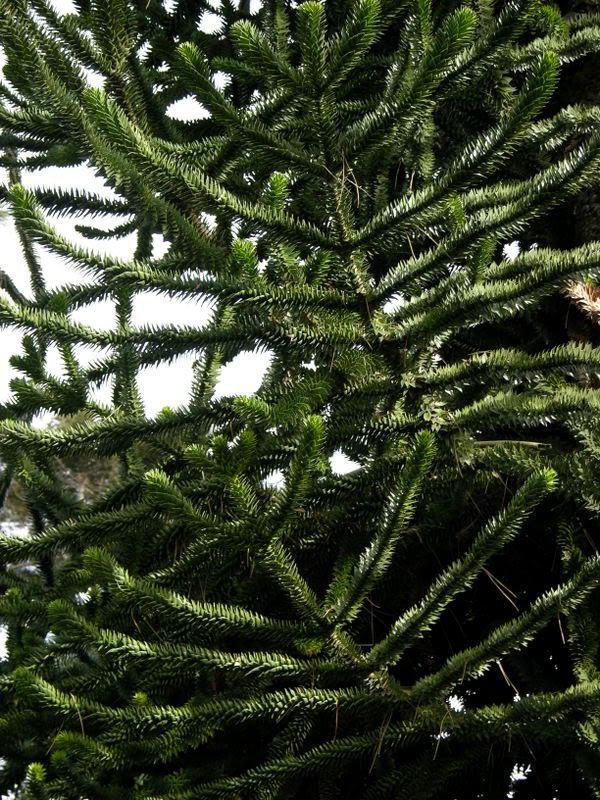
Who doesn’t love a monkey
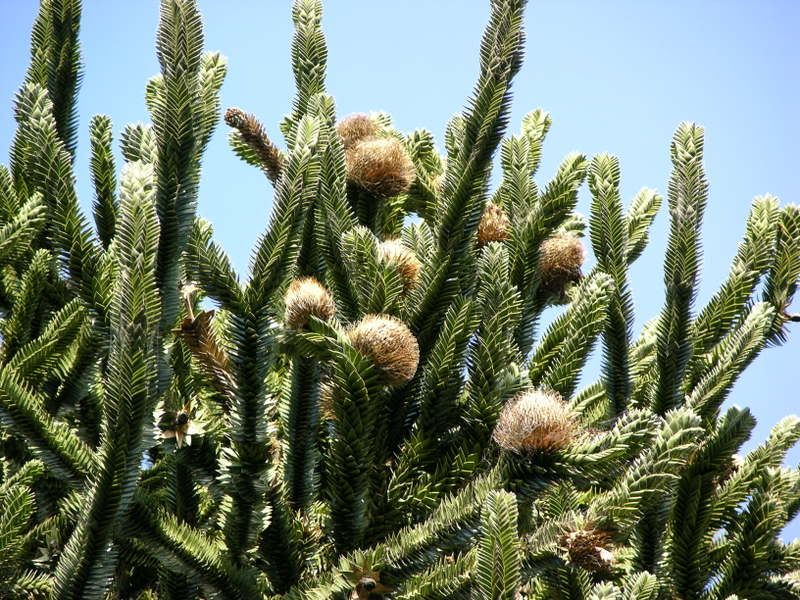
This is Protea nitidia from South Africa.
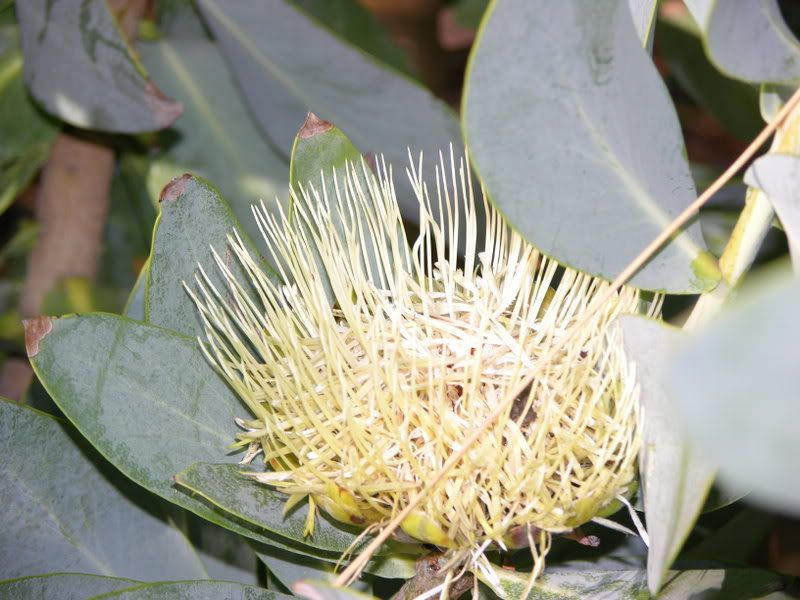
I loved the subtle variations of color and texture in the grouping of plants at the Christchurch Botanical Gardens.From left to right Leucadendron argenteum, Leucadendron laureolum, Leucospermum reflexum.
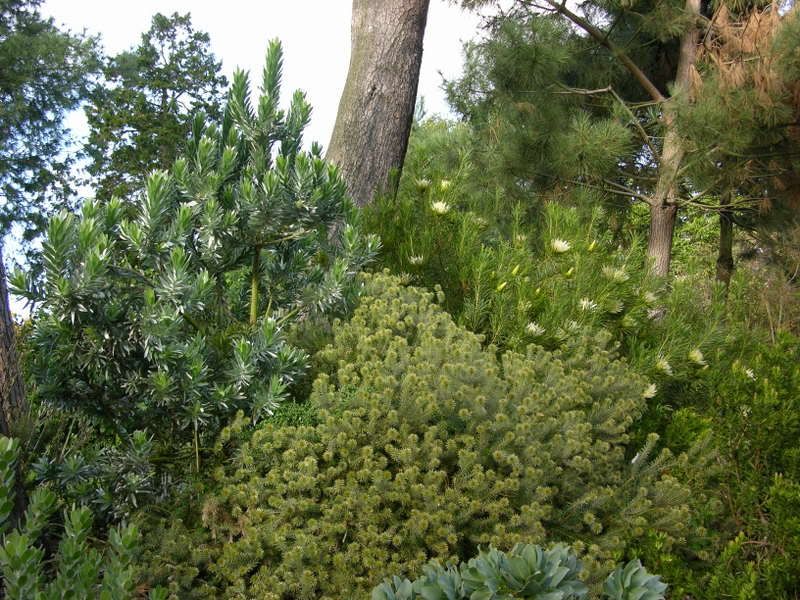
New Zealand Native Pittosporum eugenioides 'Variegatum' Variegated Lemonwood. This is a highly adaptable plant family that comes in many forms from fast growing trees to dwarf shrub. It is capable of growing under many different soil conditions, its flowers are nicely scented, and is often used as hedges or windbreaks. Arbo_retum asked what zone is New Zealand and believe it or not the answer it even more varied than asking what zone is New England. In general Christchurch, which sits on the Pacific Ocean, is zone 9 but keep in mind there are also rivers surrounding the Botanical Garden. The USDA system of classification has assigned zones 8-11 throughout New Zealand but what I found in talking to gardeners is that differences in local microclimates made zone classifications much more of a general guide than they are here in New England. That said as I post photos I will attempt to include zone info. Also keep in mind that unlike here in the states zones 8-11 were COLD but do not reach the extreme of their zone classification. I will be talking about soil, pests, New Zealand natives, ect all of have extremes not typically found in the US which makes NZ such an interesting place

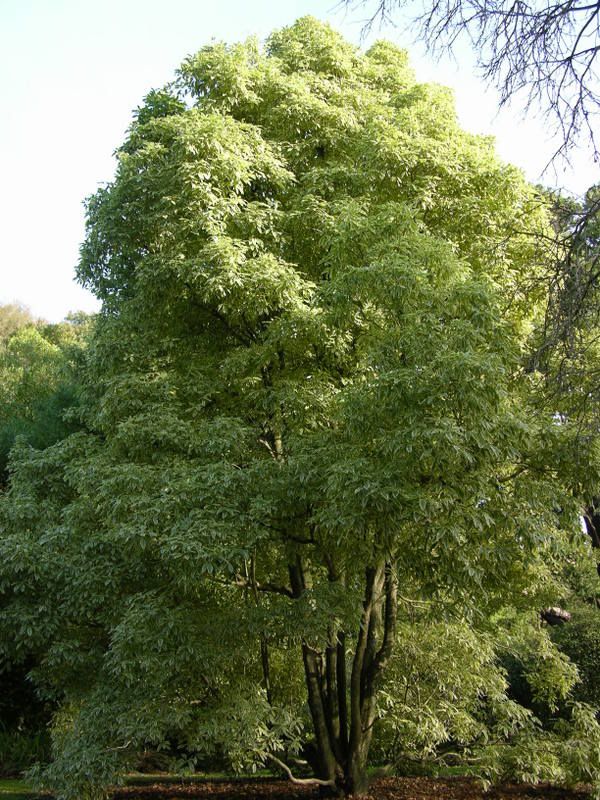
The Eucalyptus delegatensis or its common name alpine ash (because the timber bears a slight resemblance to pale-colored European ash) is the tallest growing Eucalyptus in New Zealand. Alpine Ash is native to the mountains of Tasmania and the Australian Alps but this one is believed to have been planted in the Christchurch botanical Gardens in 1885. Although this tree is frost hardy and can tolerate temperatures of 7 to 10 degrees, is a hard wood that is easy to work and stain, it was never farmed for anything other than pulp because of it’s tendency to split. New Zealanders are very aware of their agricultural resources and dependency on the world market place. I can’t tell you how many tons of Fuji apples from New Zealand I have eaten over the last five years and expected to see vast apple orchards. I was surprised to learn that with in the last year or two when the price of apples fell dramatically in the international market a majority of the orchards replaced their apples with grapes for wine.
The lower trunk of this Eucalyptus delegatensis reminded me of an elegant woman’s ball gown.
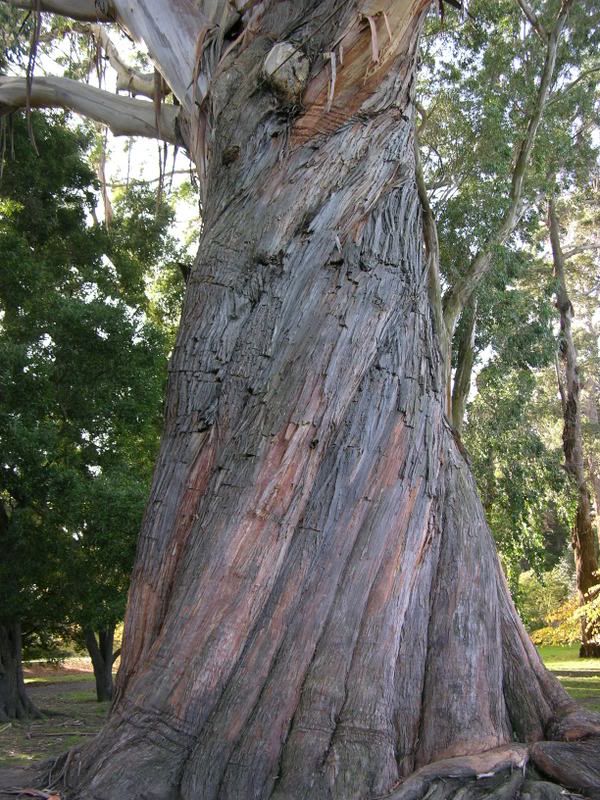
Where the tree begins to limb the bark of the Alpine Ash peels away.
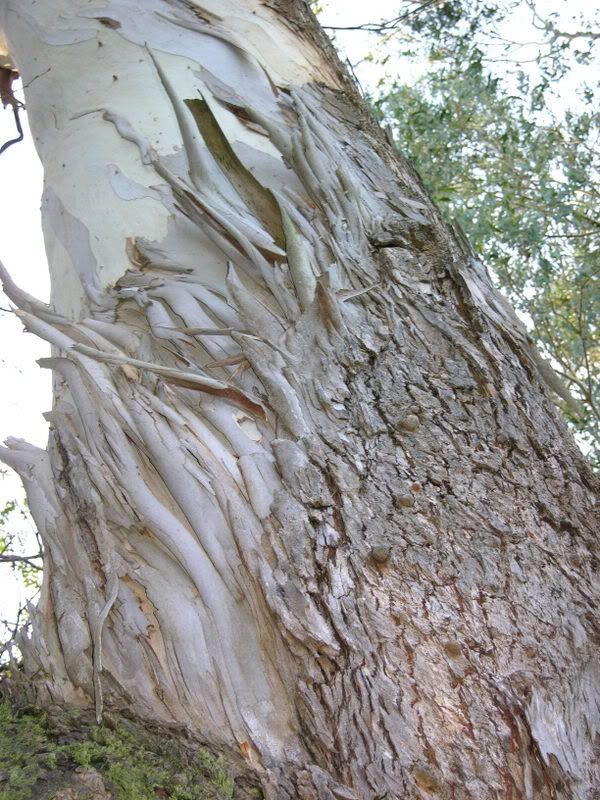
Two dancers with their arms out stretched.

Graceful old gal.
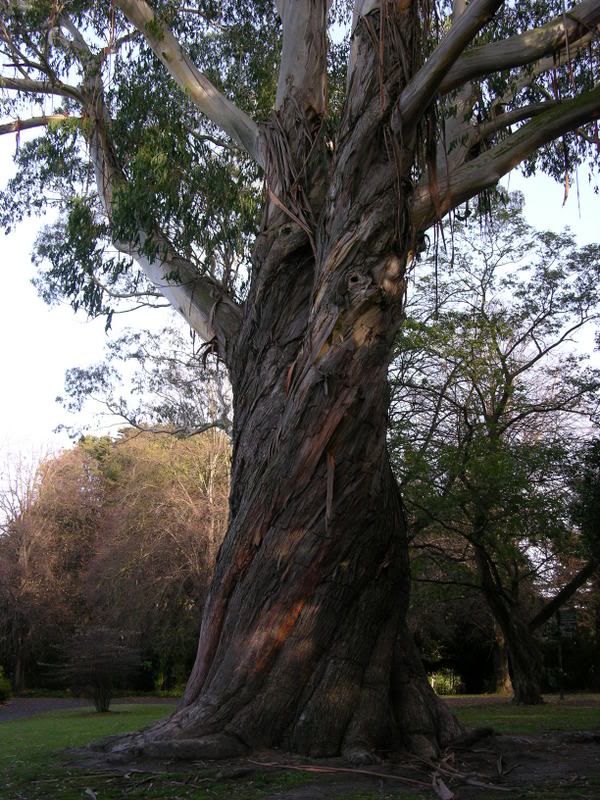
Arboretum asked about pests and today hands down the possum is at the top of the list. New Zealand's indigenous fauna and flora evolved in isolation, making them vulnerable to introduced species as their defense mechanisms are often ineffective. The effects of introduced animal pests and plant weed species have been profound, threatening large numbers of indigenous species. Introduced animals such as possums, are eating indigenous vegetation, while weeds are replacing it. Possums were imported from Australia to stimulate a fur industry in 1858. There are thought to be about 70 million in NZ, while in parts of their native environment they are considered endangered. The possums have no mammal predators in New Zealand and unlike in Australia the native flora has little or no protection ie thorns, plant poisons, ect. The damage they do is primarily to foliage and can devastate vast areas. It is estimated some 21,000 tons of vegetation per day is consumed. They consume about 15% of the annual foliage production of New Zealand's 15 most common plants. Nearly each time I was in the presence of a New Zealander and visiting Australian there was the good natured suggestion that the Australian bring back home a possum with them. Of course NZ is home to another large introduced mammal population Merino sheep and no where in New Zealand from high end boutique to souvenir shop was there a piece of wool clothing that wasn’t blended with possum fur! I must admit I was turned of at the thought but ohhhhh soft and warm. Deer (venison) is farmed in New Zealand and other than trouble from a few escapees they are not on top of the pest list. Second to the possum in the category of serious pest would be the rabbit that Captain Cook brought and introduced for fur and meat. It wasn’t long as you can imagine before the rabbit population was out of control so the weasel and ferret were introduced to reduce the rabbit population which they have done a relatively good job at keeping under control but it is now realized that they are doing serious damage to native birds. And so it goes…with each species introduced from man we are eventually reminded that Mother Nature does know best.
Display in souvenir shop…possum humor abounds in NZ
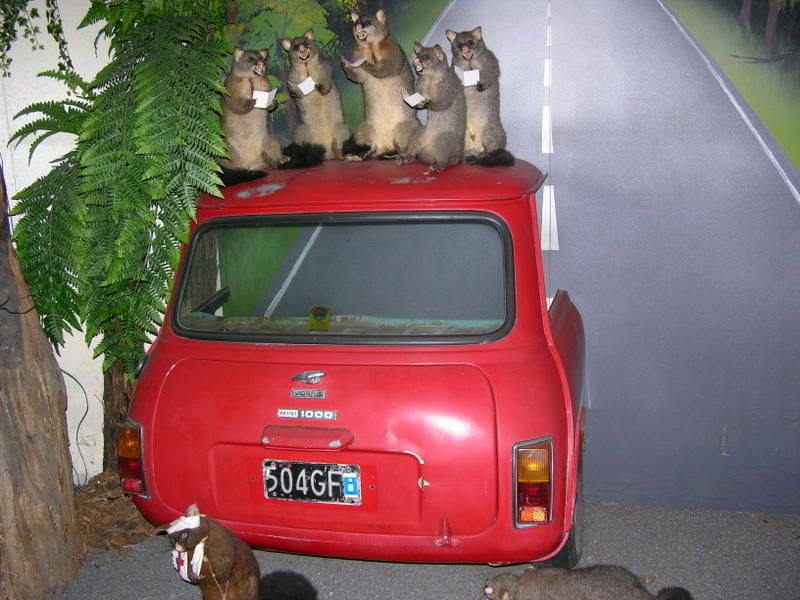
Home made display of gestational cycle of a possum…yikes!

Although there is plenty of beef to be had in NZ venison seemed to be preferred.
 Sheep, sheep everywhere sheep.
Sheep, sheep everywhere sheep.

Mindy the possum that is a pest in New Zealand is a distant relative to the opossums from the America’s. Possums and opossums are both nocturnal marsupials that are omnivores. There are sixty three different possum species and in Australia where the possums have predators (owls, dingos, ect) the population is under control and possums are regarded much like squirrels here in the states. In New Zealand where the possum has no predator they are doing major damage to vegetation and native New Zealand birds. They are a pest every where and although native species seem to be their favorite they will devastate a perennial bed over night. What they love the most is fresh young leafy growth and they will return to the same tree, shrub, plant, time after time until it is dead. They like to live in dry shelters like hollow trees, garden sheds, or yikes attics. There are many different methods of killing possums depending on where you live. 1080 is Sodium monofluoroacetate. It is an artificially-made substance used to kill possums but is like a naturally occurring poison found in some South African, South American and Australian trees. 1080 is the most commonly used method of possum control in New Zealand. kt
Still in Christchurch Botanical Gardens zone nine a few weeks shy of winter season.
Pinus maritima Cluster Pine from Southern Europe

Cluster Pine Bark up close
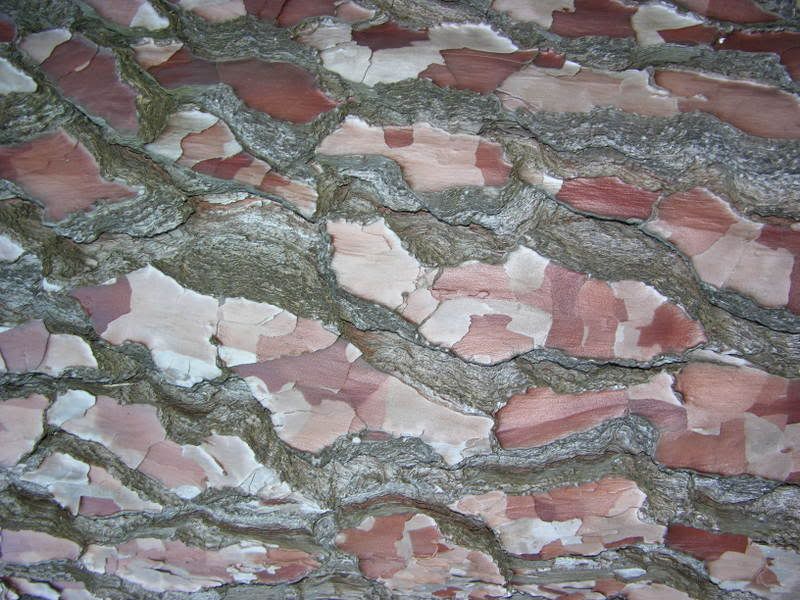
Colletia cruciata Anchor Plant was a very cool shrub from Chile and Argentina the blooms are sweetly scented.
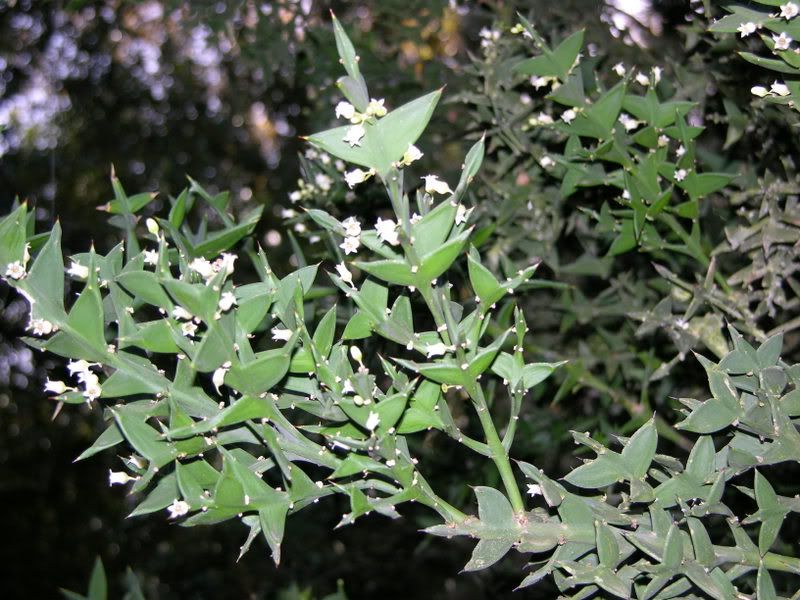
This beauty is Fagus sylvatica (European Beech)
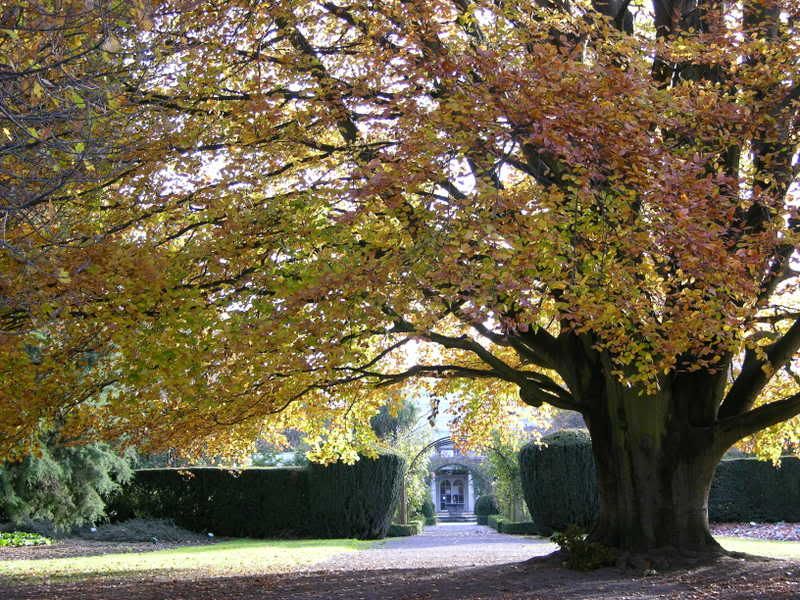
Chamaecyparis lawsoniana Lawson Cypress...outside and inside
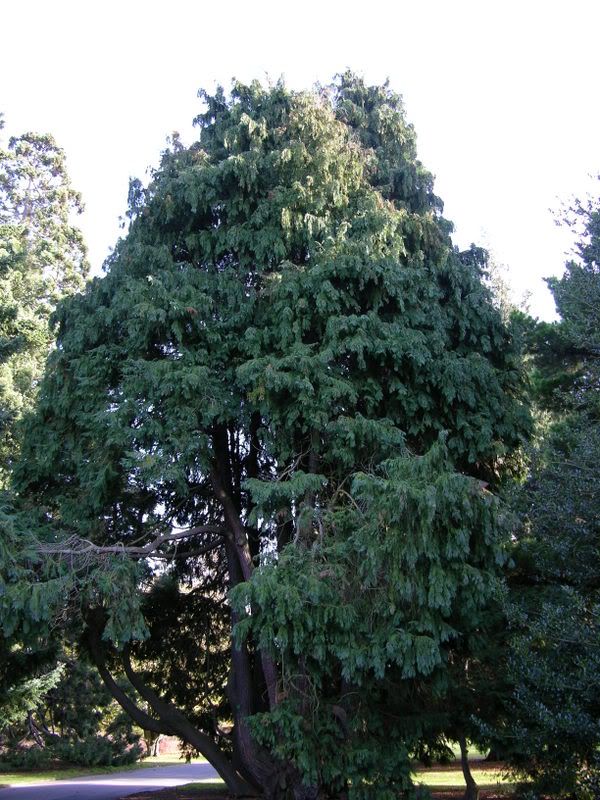

Larix great blue colored conifer

Beautiful cones.
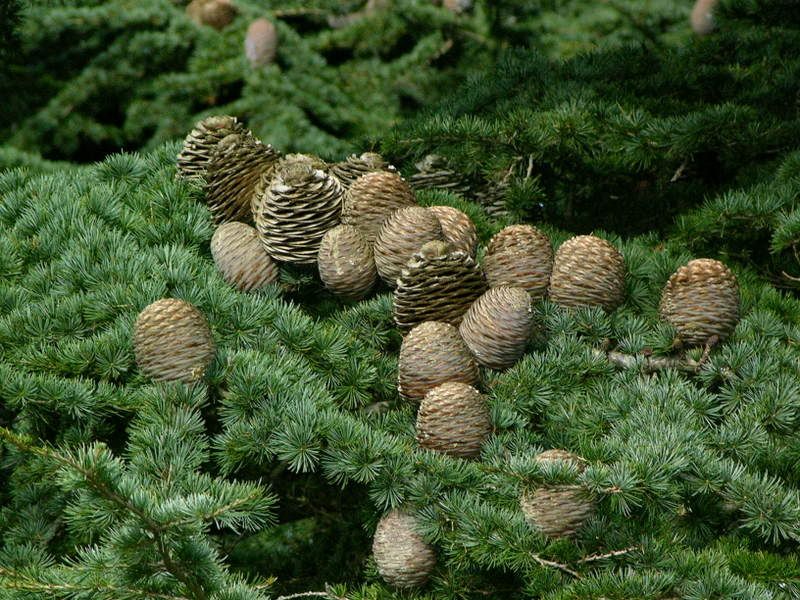
Sculpture in Cathedral Square down town Christchurch
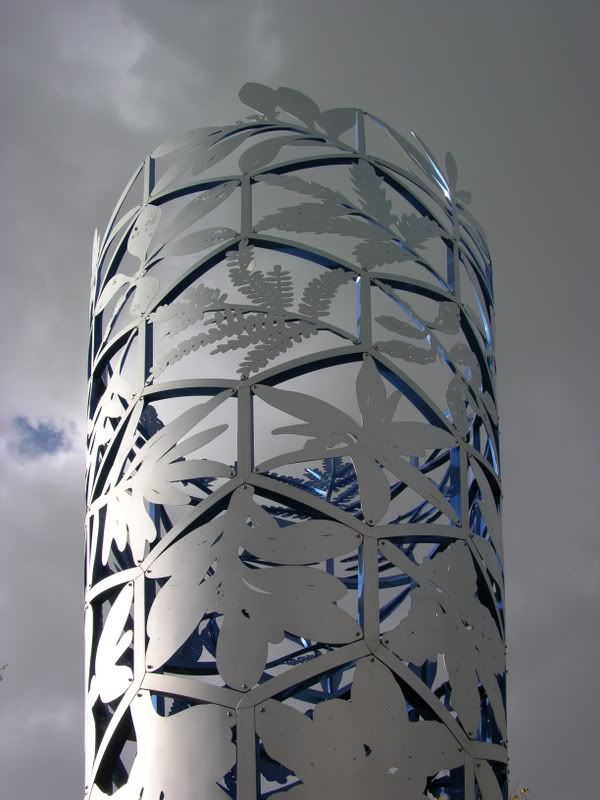
Very active square there always seemed to be a class of some type happening.
 Leucadendron is an important shrub in the new Zealand garden as it is winter blooming. It is originally from South Africa and there are many different varieties and colors
Leucadendron is an important shrub in the new Zealand garden as it is winter blooming. It is originally from South Africa and there are many different varieties and colors
Coprosma a native New Zealand shrub is again an important presence in the winter garden. There are at least two varieties that I noted (red & pink). This fall I bought Coprosma ‘Rays Red’ from Avant Gardens that I am trying to winter over indoors. So far it seems to be settling in.
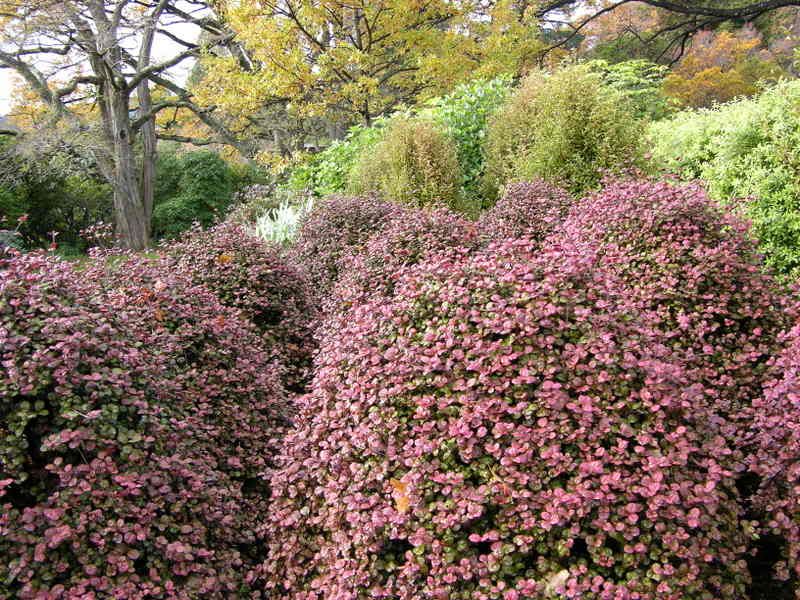 This English variegated ilex was by far and beyond the nicest specimen I have ever seen.
This English variegated ilex was by far and beyond the nicest specimen I have ever seen.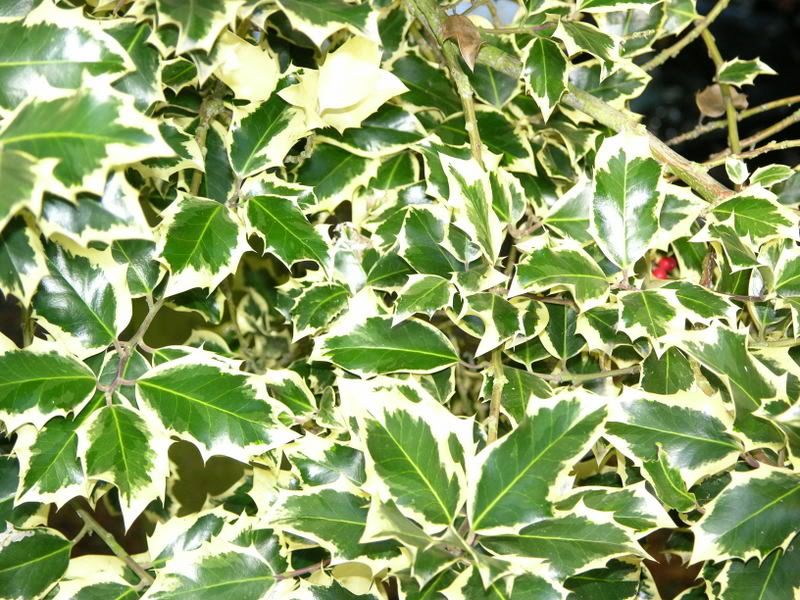 Ulmus globra camperdownii I love how this weeping tree twists and turns where the limbs begin (is that called the union?)
Ulmus globra camperdownii I love how this weeping tree twists and turns where the limbs begin (is that called the union?)
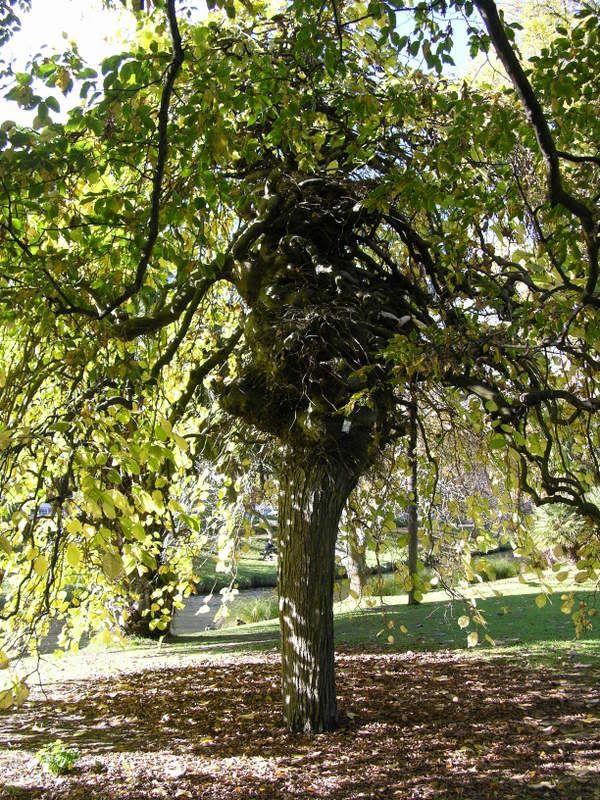 Close up of Leucospermum reflexum
Close up of Leucospermum reflexum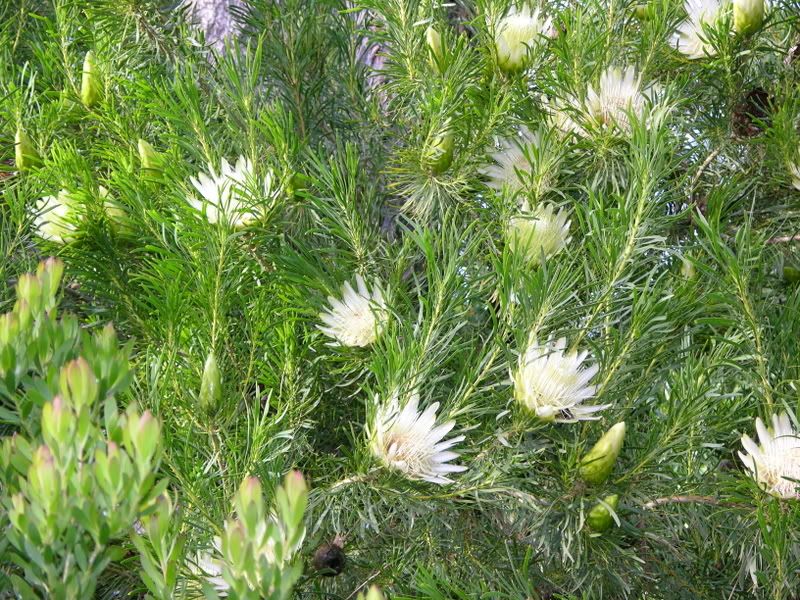
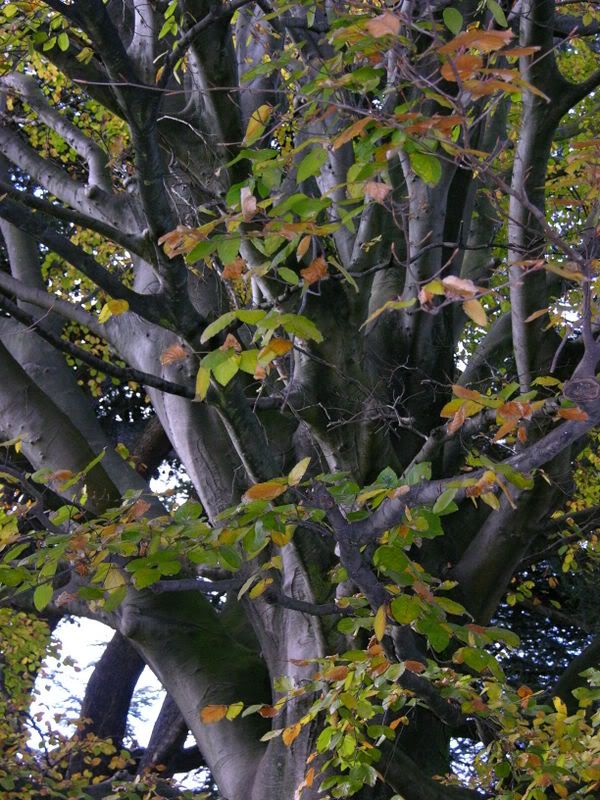 Elegia caperisis – Cape South Africa – great grass
Elegia caperisis – Cape South Africa – great grass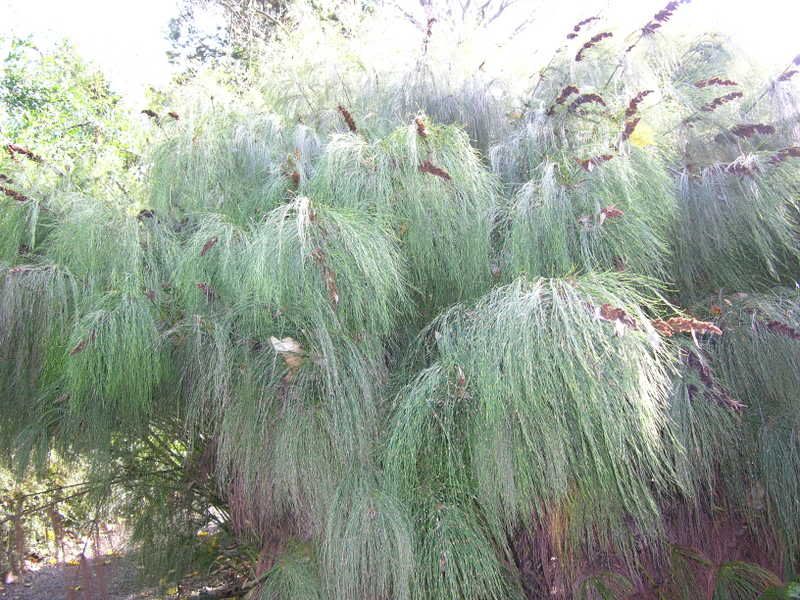 Erica discolor – love the flower I will have to look this one up.
Erica discolor – love the flower I will have to look this one up. Fatsia japonica
Fatsia japonica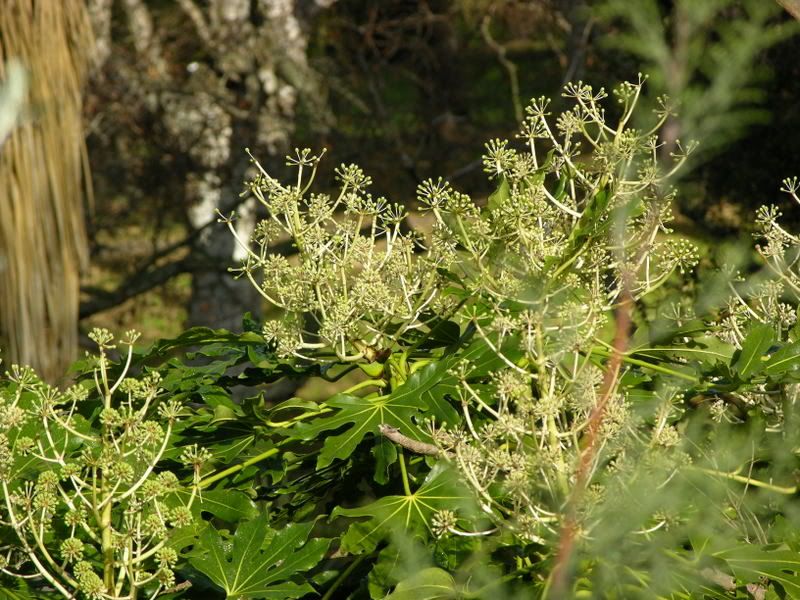 Dicksonia Antarctica - Tree Fern in front of fern house I will post MANY more tree ferns in their native forest as I traveled closer to Antarctica.
Dicksonia Antarctica - Tree Fern in front of fern house I will post MANY more tree ferns in their native forest as I traveled closer to Antarctica.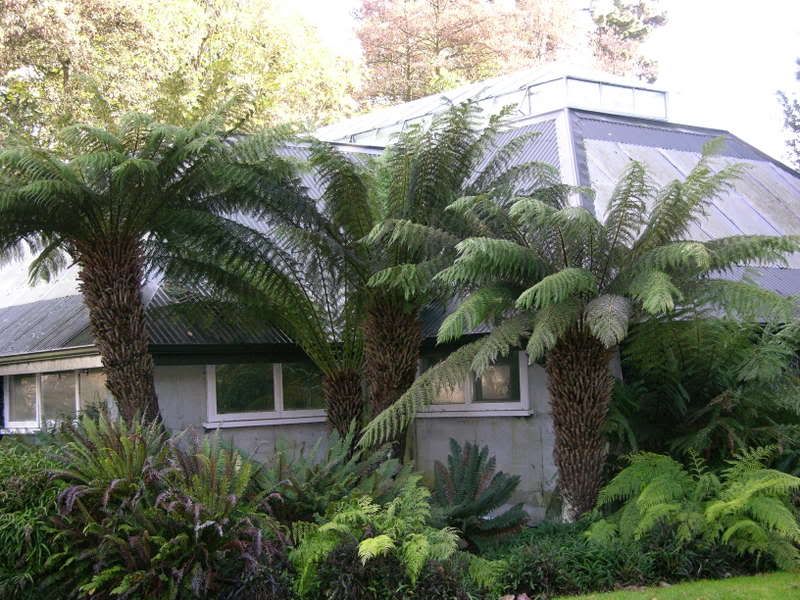 Zelkova carpinifolia? Reminds me of a sea serpent.
Zelkova carpinifolia? Reminds me of a sea serpent. 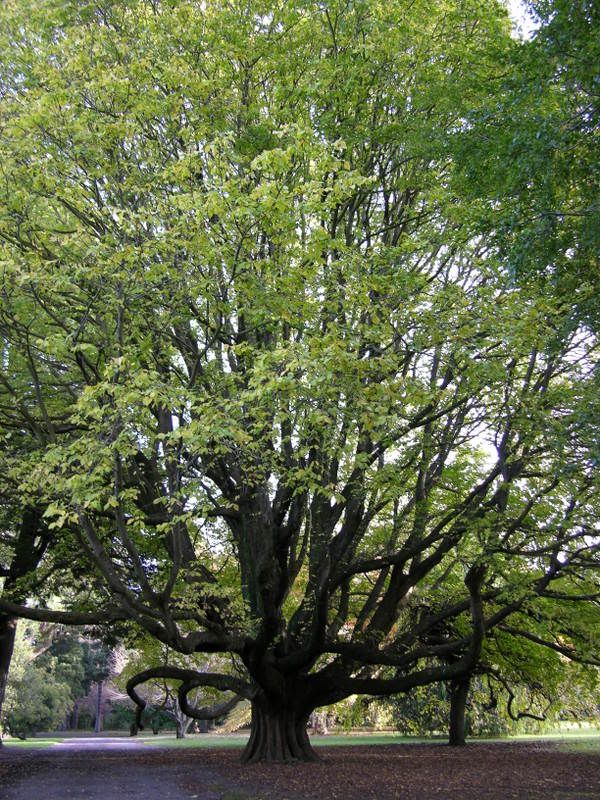 Cedrus libani (Lebanon Cedar) what a great old grand tree
Cedrus libani (Lebanon Cedar) what a great old grand tree Cedrus libani var. atlatica (Atlas Cedar)
Cedrus libani var. atlatica (Atlas Cedar)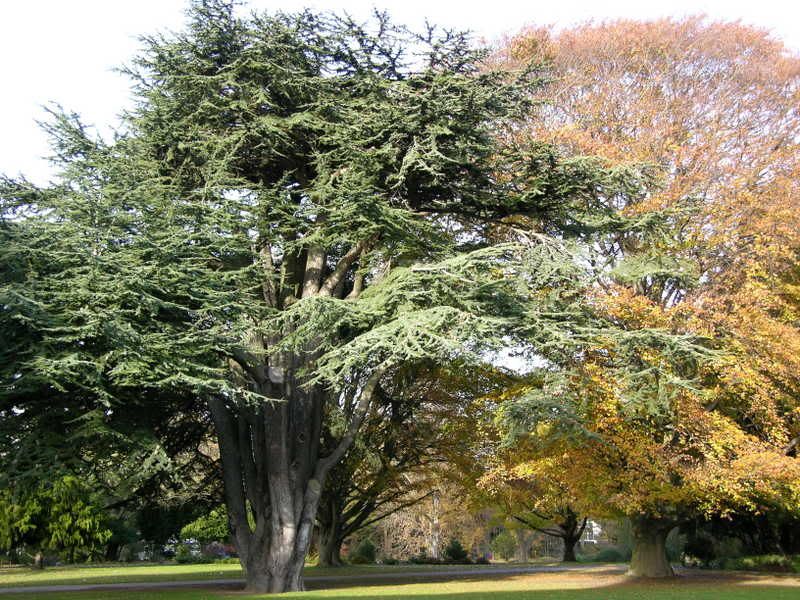 Araucaria bidwillii (bunya) another great textural plant that NZ gardeners seem to take for granted. I think gardeners who live in areas that have year round blossom have a more difficult time appreciating the value of texture.
Araucaria bidwillii (bunya) another great textural plant that NZ gardeners seem to take for granted. I think gardeners who live in areas that have year round blossom have a more difficult time appreciating the value of texture.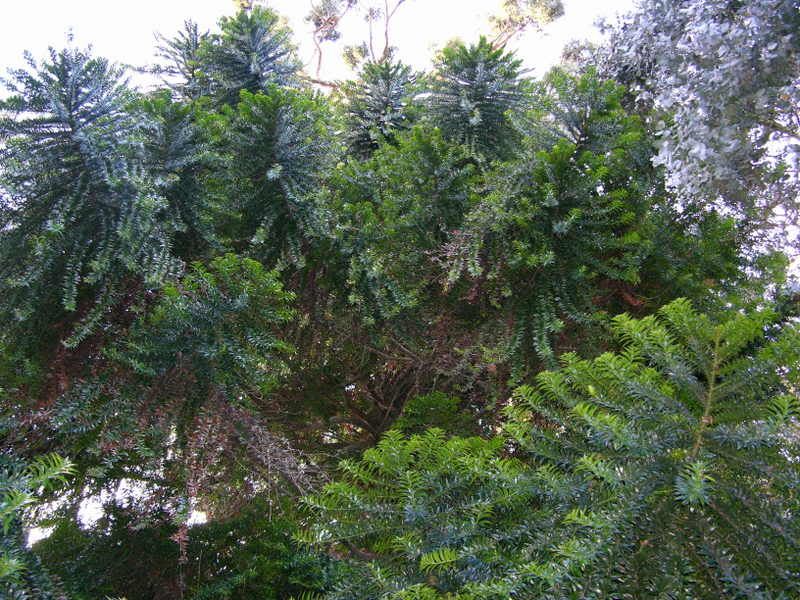 The few local gardeners that I spoke to in Christchurch shared with me a number of interesting things but the few things that stood out in my memory were that one weather/gardening challenges they face are nor’wester’s which were described as a hot wind that can reach storm force levels and cause a lot of damage in the garden as well as to their homes. In the winter it is common for this zone 9 area to have temps that drop below 32 degrees at night and it will snow once or twice a year in the hills and once or twice every couple of years in the Canterbury plains. Most homes have by American standards small yards but everyone seems to be passionate about gardening particularly with NZ natives. I heard the same thing throughout NZ that in the land areas with volcanic soil you don’t want to ever garden without a good pair of gloves as the volcanic soil will leave your skin cracked and bleeding. With a population of 350,000 the city of Christchurch is the largest city on the south island and the third largest in all of NZ. It was first settled by the English in 1850 when they sent over four ships carrying 800 people and unlike Australian pioneers most New Zealanders would like you to know these new settlers were not criminals. The city it self like many NZ communities is land locked and sandwiched between the banks peninsula that stretches into the Pacific Ocean to the east and the port hills (which are the remnants of two small conjoined volcanoes) to the south and a glacial fed river (forgot the name ) to the north. I have included below some parts of a travel journal (good reading to go to sleep by) that were my first impressions for family and friends. I then hopped a tram to Lyttleton a town on the other side of the surrounding mountains that is and was the last port before the artic. Although this small town of three thousand is only a 15 minute drive from the "big city" it had been cut off until they cut a tunnel through the port hills in 1965. When I first arrived to town I was getting my camera out of my pack ect and a nice older man started to talk well you know I not much for talking……………so he gave me a tour of his village which included introducing me to everyone on the street and in any shop we entered. He was very old and walked very slowly but it was very cool to immediately become a part of this village. We stopped at a local café and had a glass of wine and spoke with three other women my age. The conversation was lively and interesting. I am leaving Christchurch tomorrow and traveling south along the east coast through the Canterbury plains to Dunedin where there are penguins and royal albatross. Miss you all Love kt
The few local gardeners that I spoke to in Christchurch shared with me a number of interesting things but the few things that stood out in my memory were that one weather/gardening challenges they face are nor’wester’s which were described as a hot wind that can reach storm force levels and cause a lot of damage in the garden as well as to their homes. In the winter it is common for this zone 9 area to have temps that drop below 32 degrees at night and it will snow once or twice a year in the hills and once or twice every couple of years in the Canterbury plains. Most homes have by American standards small yards but everyone seems to be passionate about gardening particularly with NZ natives. I heard the same thing throughout NZ that in the land areas with volcanic soil you don’t want to ever garden without a good pair of gloves as the volcanic soil will leave your skin cracked and bleeding. With a population of 350,000 the city of Christchurch is the largest city on the south island and the third largest in all of NZ. It was first settled by the English in 1850 when they sent over four ships carrying 800 people and unlike Australian pioneers most New Zealanders would like you to know these new settlers were not criminals. The city it self like many NZ communities is land locked and sandwiched between the banks peninsula that stretches into the Pacific Ocean to the east and the port hills (which are the remnants of two small conjoined volcanoes) to the south and a glacial fed river (forgot the name ) to the north. I have included below some parts of a travel journal (good reading to go to sleep by) that were my first impressions for family and friends. I then hopped a tram to Lyttleton a town on the other side of the surrounding mountains that is and was the last port before the artic. Although this small town of three thousand is only a 15 minute drive from the "big city" it had been cut off until they cut a tunnel through the port hills in 1965. When I first arrived to town I was getting my camera out of my pack ect and a nice older man started to talk well you know I not much for talking……………so he gave me a tour of his village which included introducing me to everyone on the street and in any shop we entered. He was very old and walked very slowly but it was very cool to immediately become a part of this village. We stopped at a local café and had a glass of wine and spoke with three other women my age. The conversation was lively and interesting. I am leaving Christchurch tomorrow and traveling south along the east coast through the Canterbury plains to Dunedin where there are penguins and royal albatross. Miss you all Love kt 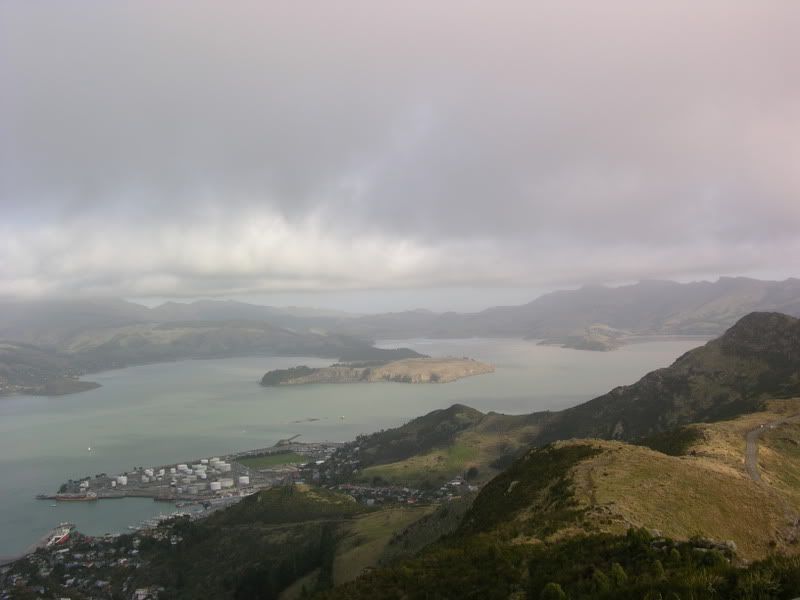 Main Street down town Lyttleton note that housing in town is built on volcanic slope and lot sizes are considerably small.
Main Street down town Lyttleton note that housing in town is built on volcanic slope and lot sizes are considerably small.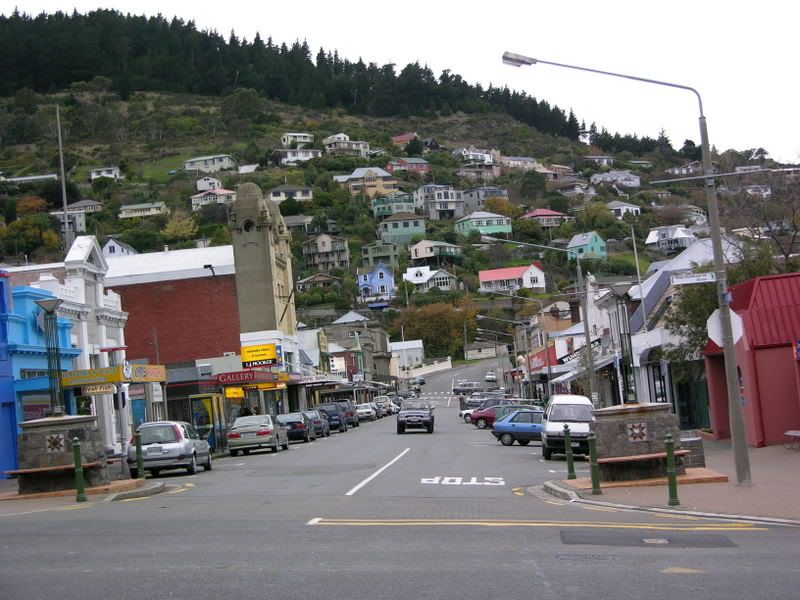 Cool older theater building
Cool older theater building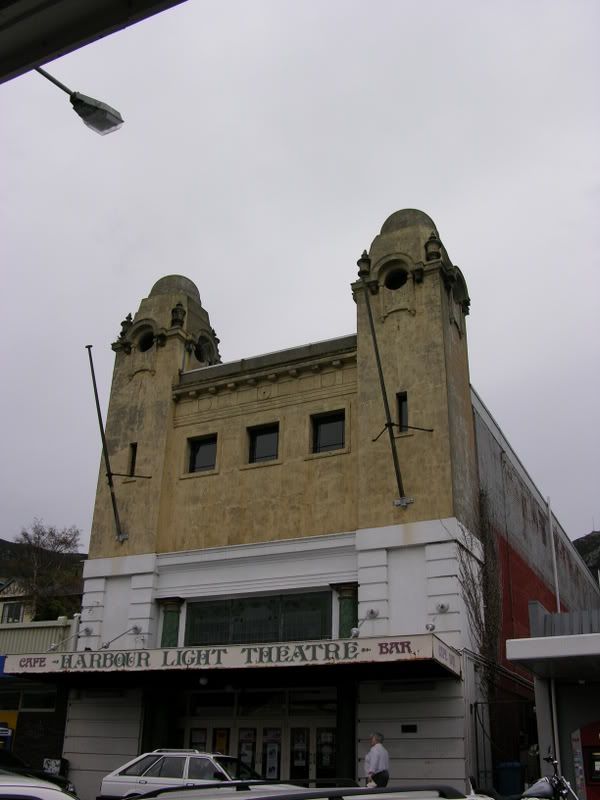 These homes are typical in style and size for non city homes throughout New Zealand
These homes are typical in style and size for non city homes throughout New Zealand